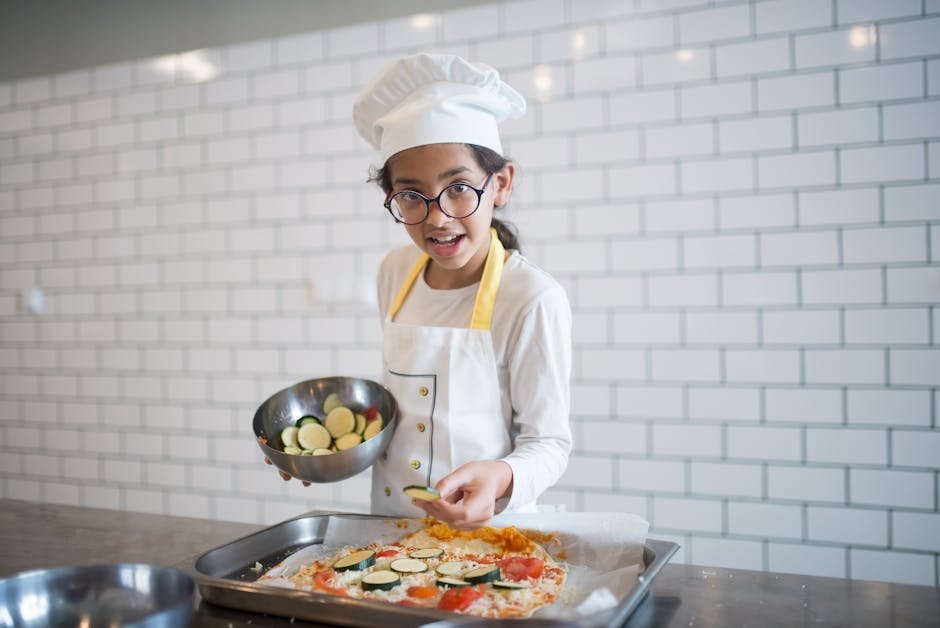5 Essential Tips for Mastering the Art of Pizza Craft at Home
Introduction to Pizza Craft: The Basics
When we dive into the world of pizza craft, we're not just throwing toppings on dough. It's much more than that. Think of it as an art form where every detail, from the selection of flour to the temperature of your oven, plays a crucial role. Getting started? Here's what you need to know. First up, your foundation – the dough. It's all about mixing the right proportions of flour, water, yeast, and salt. Don't rush it; good dough needs time to rise. Next, the sauce. Whether you're a fan of tomato, white, or pesto, keep it simple and fresh. Now, toppings. Less is often more. Choose quality over quantity and find combinations that compliment rather than overwhelm. Don't forget the cheese! Mozzarella is a classic, but there's a whole world of cheese out there to explore. And when it's time to cook, remember: a hot oven is your friend. Whether you're working with a kitchen oven or a stone pizza oven, aim for the highest temperature possible. This ensures a crispy crust and perfectly melted cheese. Mastering pizza craft at home is a journey of experimentation and patience, but the reward? Delicious, homemade pizza that could rival your local pizzeria.
Choosing the Right Ingredients for Your Pizza
Getting your pizza ingredients right is key to nailing that perfect slice. Start with the dough. You can make your own with just flour, water, yeast, and a dash of salt. For the sauce, simplicity wins - tomatoes, a hint of garlic, salt, and basil do the trick. Next up, cheese. Mozzarella reigns supreme, but don't limit yourself. Mixing cheeses can add depth. When it comes to toppings, fresh is best. Go for ripe tomatoes, basil leaves, and if you're adding meat, pick quality over quantity. Remember, the best pizza is the one you love. So, play around and find your perfect mix.
The Importance of Dough: Kneading and Fermentation
Getting the dough right is crucial in pizza making; it's the foundation, after all. When it comes to kneading, think of it as a way to mix all the ingredients thoroughly while adding strength to the dough. Knead your dough until it's smooth and elastic. This might take about 10 to 15 minutes by hand. The effort pays off by forming the gluten which gives your pizza base that desirable chewy texture.
Fermentation is the next big step. It's where the magic happens. After kneading, let the dough rest. This period allows yeast to do its job, creating gases that make the dough rise and develop flavor. A slow fermentation in the refrigerator, say 24 to 48 hours, is ideal. It might test your patience, but the depth of flavor and improved texture in your crust will be worth it. Short on time? Even a few hours at room temperature can work wonders compared to baking it right away.
Remember, mastering dough isn't just about following a recipe. It's a skill that improves with practice. Pay attention to the feel of the dough at every step, and before you know it, you'll be crafting pizzas with a crust that's the envy of your friends and family.
Mastering the Art of Pizza Sauce
When it comes to crafting pizza at home, the sauce is where the magic begins. It's simple: a great sauce equals great pizza. So, how do you master the art of pizza sauce? Let's keep it straight. First up, use quality tomatoes. Whether you're going for fresh or canned, quality is key. San Marzano tomatoes are a fan favorite for that authentic flavor. Next, keep the ingredients minimal. Good pizza sauce needs only tomatoes, a dash of salt, and a hint of basil or oregano. That's it. No fancy stuff. Remember, the best pizza sauce is not cooked. Yes, you heard that right. Mix your ingredients and let them meld together on the pizza as it bakes. This keeps the sauce fresh and flavors intense. Lastly, don't drown your dough. A thin layer spread evenly with the back of a spoon will do. Too much sauce can make your pizza soggy. There you have it. Quality tomatoes, minimal ingredients, uncooked sauce, and just the right amount. Stick to these pointers, and you're on your way to mastering the art of pizza sauce.
Techniques for Topping Your Pizza Like a Pro
Topping your pizza like a pro means knowing what goes on first, how much to use, and what combinations work best. Always start with a good base of sauce; too much can make your crust soggy. Spread it evenly, leaving a small border for the crust. Cheese comes next, and here, less is often more. Too much cheese can drown the other toppings and make your pizza greasy. Now, for the toppings themselves, think balance. Your meat shouldn't overpower your veggies, and every bite should have a bit of everything. Speaking of veggies, put them on top of the cheese so they get nicely roasted. If you're using meats that release fat, like pepperoni, they go on top to flavor the entire pizza. Finally, remember that fresh herbs add a burst of flavor if added right after the pizza comes out of the oven. Follow these simple steps, and you'll serve up pizzas that impress, slice after slice.
The Secret to a Perfectly Baked Homemade Pizza
To nail that perfectly baked homemade pizza, start with cranking up your oven as high as it will go. Real talk: most home ovens hit around 450-500 degrees Fahrenheit, but if yours can go higher, let it rip. The key here is heat - lots of it. While your oven's getting hot, slide a pizza stone or a heavy-duty baking sheet in there to preheat too. This trick mimics the fiery floor of a pizza oven and gives you that crispy-bottomed crust we all crave.
Now, let’s talk about dough stretching. Use your hands to press and stretch the dough. Avoid rolling pins as they squish all the air out, making your pizza base dense and sad. Aim for thin in the center with a puffier edge to hold all your toppings. Speaking of toppings, less is more. Piling on too many toppings can make your pizza soggy. Stick to a few quality ingredients.
When you’re ready, sling your pizza onto the preheated stone or baking sheet with a quick jerk of the wrist. Bake it until the crust is golden and the cheese looks bubbly and irresistible. Remember, every oven is different, so keep an eye on your masterpiece.
Mastering the perfect homemade pizza is more about technique and less about fancy ingredients. So crank up the heat, keep it simple, and get ready to impress yourself and your friends with your pizza craft skills.
Exploring Different Styles of Pizza
When diving into the world of homemade pizza, knowing the different styles is crucial. You've got the classic New York-style pizza, famous for its thin, foldable crust and hearty toppings. Then there's the Chicago deep dish, a pie that's literally a pie, with a thick crust and loads of cheese and sauce. Don't forget about Neapolitan pizza, originating from Naples, Italy, with its strict guidelines: a soft, thin crust, fresh mozzarella, tomatoes, and basil. Want something with a bit of crunch? The Roman style is your go-to, known for its thin, crispy crust. Lastly, for those who like to mix things up, Sicilian pizza offers a thick crust with a spongy texture, perfect for holding a variety of toppings. Each style has its charm and techniques. Experimenting with these can make your pizza night an adventurous journey. So, before you roll out your dough, think about what pizza persona you're aiming for. It's not just about the toppings; the base matters just as much.
Essential Tools for Upgrading Your Pizza Craft
To make epic pizza at home, you need the right gear. It’s not just about having an oven and some dough. First, a pizza stone or steel. These suckers get blazing hot, giving you that crispy base we all crave. They mimic the effect of a professional pizza oven. Second, a pizza peel is non-negotiable. It helps sliding your masterpiece in and out of the oven without a pizza disaster. Third, consider a dough scraper. This little tool is a game-changer for handling and cutting dough. Fourth, a rolling pin, though some pizza pros prefer stretching by hand for that perfect base. Lastly, a quality pizza cutter. You don’t want to ruin your perfect pizza with a shoddy cut. With these tools, you’re on your way to pizza greatness.
Common Pitfalls in Pizza Making and How to Avoid Them
Many first-timers and even seasoned home cooks stumble in their quest to craft the perfect pizza. It's not just about tossing dough and slapping on toppings. There are common pitfalls that can derail your pizza game. But don't sweat, we'll guide you through avoiding them. First up, overloading toppings. It's tempting to pile on every favorite topping, but this just leads to a soggy mess. Aim for balance. A thin layer of sauce and a reasonable amount of toppings ensure your crust stays crisp. Speaking of crust, another misstep is the dough not fully cooked. It's crucial to preheat your oven as hot as it will go, usually between 450°F and 500°F (232°C and 260°C). This high heat is key to getting that pizzeria-style crispness. Then there's the cheese dilemma. While mozzarella is the go-to, using low-moisture mozzarella avoids the common pitfall of a waterlogged pizza. Fresh mozzarella is great but drain it well or even pat it dry. Lastly, don’t forget the importance of seasoning. A sprinkle of salt and herbs on top before baking can elevate your pizza from good to great. By steering clear of these pitfalls, you’ll be on your way to mastering home pizza craft.
Conclusion: Practice Makes Perfect in Pizza Craft
Wrapping this up, remember that making pizza at home is all about the journey, not just the destination. The key to mastering this craft? Practice, practice, and more practice. Each pizza you make is a chance to learn and improve. Don't sweat the small stuff - whether the dough doesn't rise perfectly on the first go or the toppings aren't evenly spread. It's all part of the process. Embrace each attempt, cherish the missteps, and celebrate the victories, no matter how small. Over time, with patience and persistence, you'll find your groove and develop your unique pizza-making flair. So, keep that oven hot and your spirits high. Happy pizza crafting!

